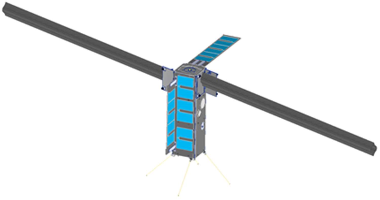| Spacecraft name | SeaLion (VSCP-1A) |
|---|---|
| Spacecraft type | CubeSat |
| Units or mass | 3U |
| Status | not launched, expected in 2025 |
| Launcher | Firefly Alpha, (Elytra) |
| Entity name | Old Dominion University |
| Institution | University |
| Entity type | Academic / Education |
| Nation | US |
| Partners | Coast Guard Academy (CGA) |
| Oneliner |
Deployable composite structure (DeCS) and S-band antenna. Validate the operation of the Impedance Probe (IP). |
| Description |
Deployable composite structure (DeCS) and S-band antenna. Validate the operation of the Impedance Probe (IP). SeaLion is 3U CubeSat, that is being designed and developed by a team of students and professors at Old Dominion University in Virginia. This smallsat is a collaboration between Old Dominion University, the United States Coast Guard Academy and the Air Force Institute of Technology. Like many other academic CubeSat spacecraft, it is a demonstration mission aiming to advance the technology readiness levels of its payloads, of which there are three:
SeaLion is rather an unusual mission for Bright Ascension to be involved in. It will be launched into very low Earth orbit with non-rechargeable batteries as the only power source, which makes the expected mission life of the satellite around 10 days. An additional challenge of the SeaLion mission is its timescale. The satellite is expected to be launched as a secondary payload onboard the NG 18/19 mission out of Wallops Island, VA in August 2022 on an Antares Rocket. With only a few months before the launch date, the pressure is mounting on rapid development and a no-risk/no-failure scenario. |
| Notes |
Originally though to have launched on Antares Cygnus NG-19 mission in August 2023. |
| Sources | [1] [2] [3] [4] [5] [6] [7] |
| Photo sources | [1] [2] [3] [4] [5] [6] |
| COTS subsystems |
|
| Subsystems sources | [1] |
Last modified: 2025-04-18




